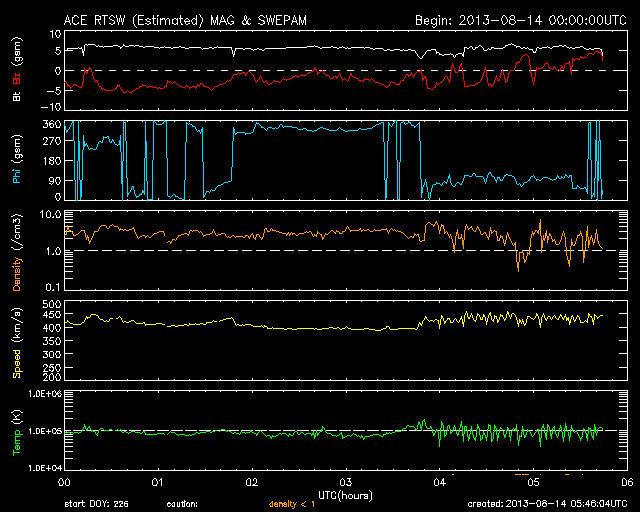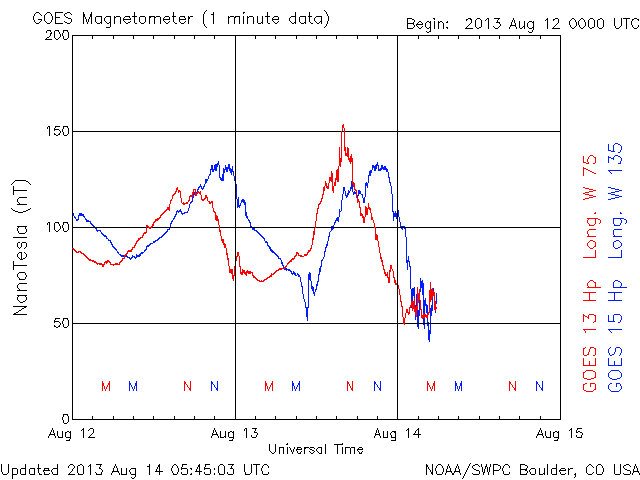August 14, 2013 Auroras
Grand Rapids, MN
The interplanetary magnetic field did not drop that far south, but there was probably enough fluctuation in it to disturb Earth's magnetic field. I noticed the GOES magnetometer readings fluctuating, so I decided to go out and take a look. I wasn't expecting much more than a green band right at the northern horizon because Bz was only around -3 or -4 nT.
When I got just north of Grand Rapids, I couldn't believe it when I saw a band at least 25 degrees above the horizon. I dismissed it as a band of clouds because it was higher in the sky than I expected. However, I got to Peterson Road, fired a couple shots, and indeed, it was an auroral band. It dissipated pretty quickly after I got there, though.
| Double-banded aurora. One band on the horizon and another, mostly to the left, above 25 degrees above the horizon. |
I came out to test my new Dynamic Perception motion controller. I was hoping just to get it operating, and I was messing things up at first, but just when I got it figured out and set up a new motion control, a substorm erupted. The auroras brightened at the cloud line, and columns developed above the bright green band. I watched as the substorm unfolded, a couple Perseid meteors lit up the sky (mostly off frame), and clouds slowly rolled in.
| An auroral substorm that hit to my surprise. |
To see what the magnetic fields looked like, measured at ACE (at the L1 point between Earth and Sun) and GOES-13 and GOES-15 (geostationary orbit), I have attached the readings below.
 |
|---|
| Readings of the interplanetary magnetic field from the ACE spacecraft. |
 |
|---|
| GOES magnetometer readings. |